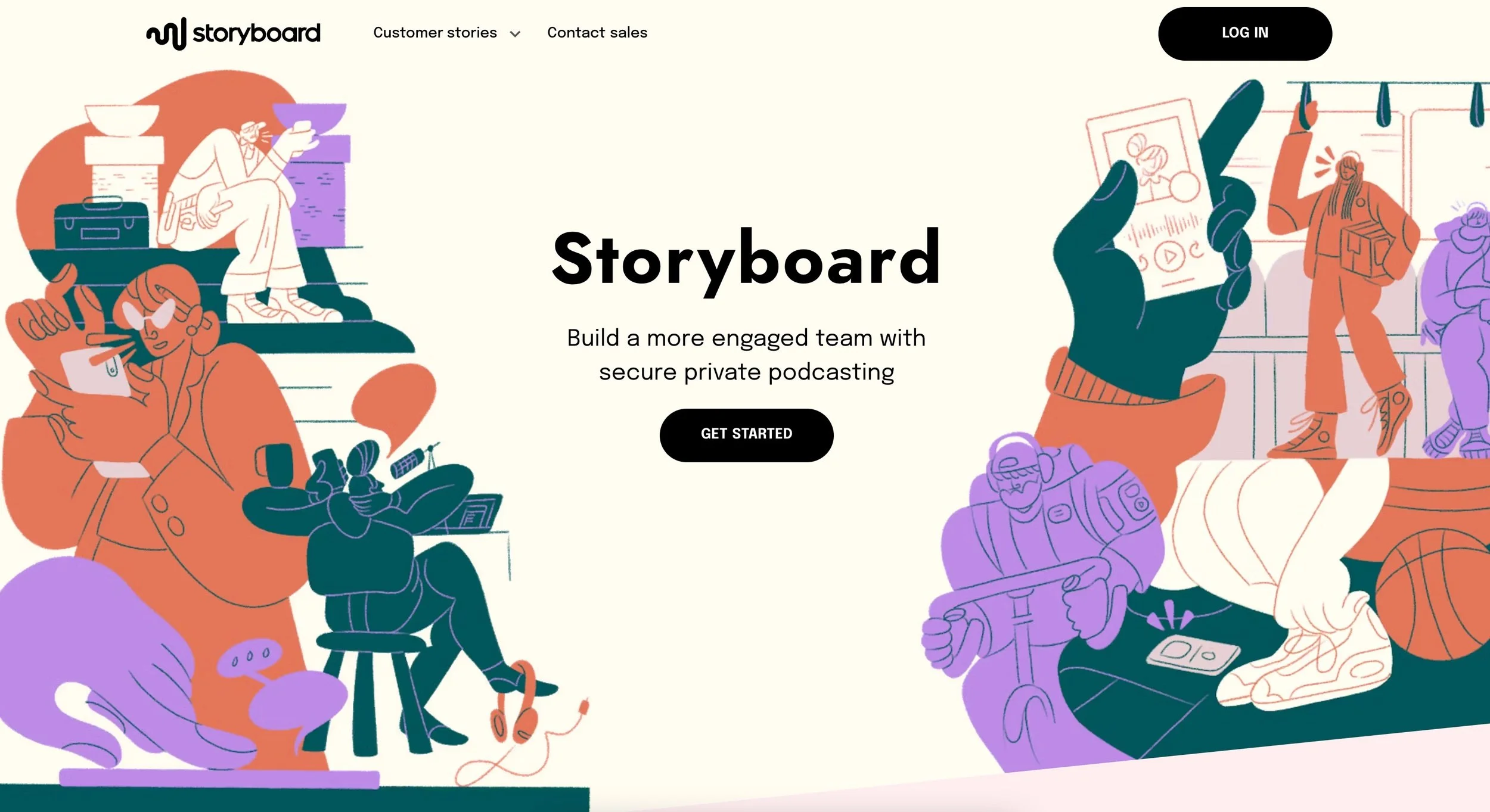MIT Media Lab
At MIT Media Lab in the Lifelong Kindergarten Group, Unhangout thrives as an online event platform. I helped rethink and redesign Unhangout’s web presence. We set out to modernize and re-establish Unhangout as a leader and innovator in the education world. Unhangout is an open source platform for running large-scale, participant-driven events online. Unhangout facilitates participant-driven, community-based learning, rather than top-down information transfer.

I led the design and re-envisioning of the Unhangout team homepage at MIT Media Lab in Cambridge, MA for Desktop, iOS, Android, and Mobile Enabled Web compatibility. I defined the design and addressed customer pain-points related to providing a pristine web experience in a valuable way to our target users.
Customer Insights & Ideation
I partnered with one project manager, one researchers, and one other lead designer to uncover insights and translate concepts into features that address customer behaviors and motivations.
Experience Strategy & Vision
I created frameworks and wireframes to share the vision, design principles and content strategy. This helped to evangelize ideas, gain alignment and drive decision making.
Planning & Scope Definition
I defined the product with my project manager and research partners. I evangelized customer goals and balanced business goals. I prioritized and negotiated features for launch and beyond.
Design Execution & Validation
I designed wireframes with responsive design principles in mind for Desktop and Mobile Enabled Web. Then I executed journeys, flows, and wireframes.
Leadership
I designed up and presented works to gain buy‐in from senior stakeholders.

Our problem statement was: Users come to the platform wanting to sign-in to a meeting. We currently do not offer that feature. How can we accommodate users who want to join a meeting when they land on the homepage?

Heuristic Review
The heuristic review was completed to identify usability problems on the current site and meeting platform. Some user pain-points I found were that participants in meetings had difficulty signing in and staying in meetings.
Requirement Gathering
Arguably one of the most important User Research methods is requirement gathering. My approach to requirement gathering looks like Stakeholder interviews. In gathering the design requirements for the project it is also important for to consider the technical history of the product so that I can design a solution that takes the whole flow into account. An effective requirement gathering exercise gives me a clear picture of what I will be designing for and what features to include.
Competitive Analysis
When approaching a design solution, I always first survey the market and implement diligent market research in inform the evolving design. This step of the process is important because quickly we learn what user expectations are across brandname products. For example, in this competitive analysis, I found that best-in-class meeting platforms usually providing a one-click meeting joining solution by providing a button on the homepage. This had become the design expectation and ideal for users; therefore, we needed to provide an even simpler solution than the one that arose to the top in the competitive analysis.

Stakeholder Interview
The Stakeholder Interview accompanies gathering requirements so that I as a designer can become aware of all of the players who are invested in seeing the design solution succeed. I interview all relevant stakeholders to learn both technical limitations and aspirations for the product. By gathering these insights, I can design a holistic solution that reaches successful implementation.
Survey Design
Survey design matters deeply to what we learn about our users. During my time at MIT Media Lab I worked with a Post-doc Researcher to design a survey that could be administered to users of the website and platform. Our goal in administering the survey was to find out where user pain-points are and what their goals are when they approach the platform. We found that users could see improvement in finding out how to onboard their meeting participants onto the platform.
Sketching
I use sketching as either a group exercise or an independent brainstorming for reaching the best solution. Any designer will tell you that sketching is valuable for the exercise's ability to reach innovative solutions on paper. Designers use sketching to communicate their initial designs, and I find sketching a helpful exercise for every project.

User Flow
User flows are a pivotal part of the design process for considering the full flow of the experience and how the user will move from point A to point B. User flows provide practical structuring for the design that can be circulated amongst product managers, engineers, and designers alike.
Wireframing
The result of the above design processes brings me to wireframing, which is the culmination of all of the steps we have taken in the design research methods above. Wireframes are accompanied by technical annotations in which I detail the exact specifications in which both developers and product managers can reference when building from stories. Wireframes are the communication tool amongst team members for both the intermediary and final designs.
Beta Testing
Once design changes were made to the meeting platform, we needed to know the breakpoints in the flow. With a small team, we hosted meetings together on the platform to test the points in the experience that were breaking. Then we sent these recommendation to our developer to be fixed, so that the platform could launch steadily and without flaw.

When re-envisioning the homepage, by redesigning the homepage on the site this in-turn changed the rest of the user flow. I designed an adapted sign-up form for the platform. The following screens represent the platform experience and the screen above represents the usable and learnable design solution to help new users to enter their meeting, while also providing important profile information that can be viewed by other users in the meeting.

Profile Page
Once the user has filled out the sign-up form they land on the profile page they have just created that other users can view as they are participating in the meeting. This page lists users' interests and information so that they connect with other users with like interests.

Interests Page
In this view users can sort by Interests. For example, if you have included your interest in education, other users who have indicated their interest in education will appear on this page, so users can make connections more easily.
Next Steps and Conclusion
As a running project at MIT Media Lab, Unhangout continues to iterate and to transform the platform. My design recommendations informed next generation iterations of the Unhangout platform.






